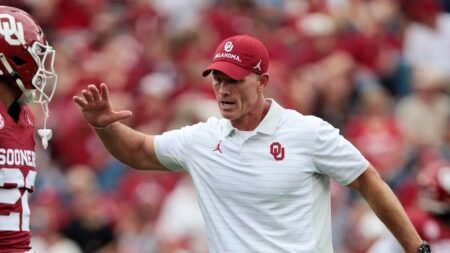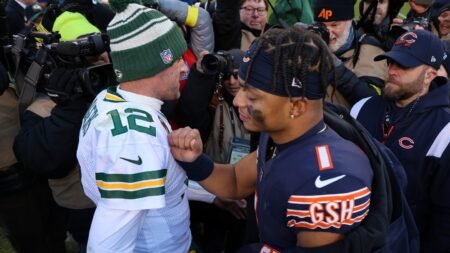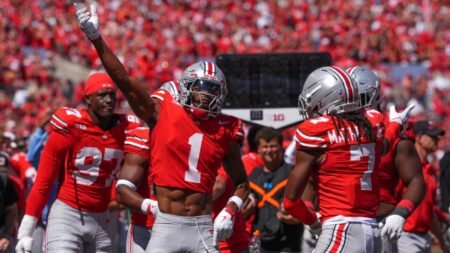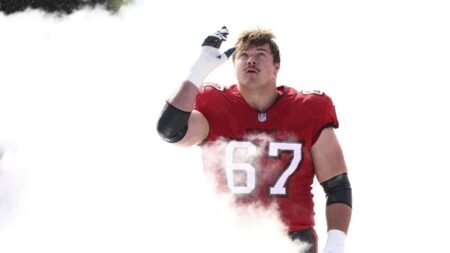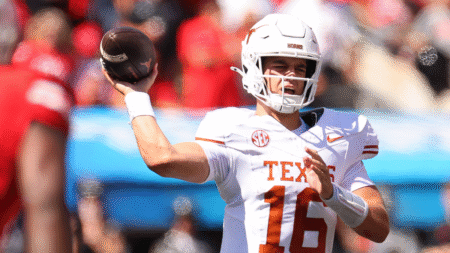The NFL may have a bone to pick with Nielsen’s measurement of its biggest tentpole events, but league officials on Tuesday acknowledged that the ratings service will continue to serve as the currency that underpins some $5.2 billion in seasonal advertising transactions. While the endorsement seemed to undermine an earlier report about the NFL’s dissatisfaction with the new ratings model, it also won’t have any material impact on the buying and selling of in-game ad units.
Speaking on a Zoom call to a group of reporters earlier in the day, NFL chief data and analytics officer Paul Ballew addressed Nielsen’s transition to the new Big Data + Panel methodology, against which around 85% of all commercial inventory was sold in the spring upfront bazaar. A member of Nielsen’s quality-advisory board, Ballew said the company’s shift to counting the house via the accredited BDP scheme “is something we strongly support.”
“The step that Nielsen’s taken is a positive step in the direction to improve measurement, along with some other initiatives such as filling in some gaps in their out-of-home measurement,” Ballew said. “So, I think … as we go into this season we will have a more robust currency that is widely used in the marketplace, which will allow us to continue to go down that path of more accurate measurement.”
Ballew went on to say that there remains room for improvement on the audience-measurement front, a sentiment that has echoed throughout Nielsen’s 75-year reign as the king of currency. But as much as the ratings monopoly has taken its share of knocks over the decades, it has never been supplanted as the anchor of the $70 billion-plus TV ad business.
As such, the NFL is less interested in inventing a better mousetrap than it is in doing whatever it can to help improve the evolving metric against which nearly all premium inventory is bought and sold. “We’re going to continue to work with Nielsen … to accelerate the measurement innovation even further,” Ballew said. “There are still opportunities to bring in first-party data on the streaming side, [and] there are still opportunities to deal with some technical deficiencies as pertains to elements such as co-viewing, especially for big tentpole events like the Super Bowl and Thanksgiving.”
While the Super Bowl and the annual Turkey Day tripleheader have in recent years enjoyed significant ratings boosts in light of the industry’s adoption of Nielsen’s measurement of out-of-home audiences, the NFL believes that the reported deliveries for those big games remain woefully undercounted. Specifically, the league suspects that Nielsen’s co-viewing tallies are falling shy of the actual consumption patterns.
“If you think about the Super Bowl, for instance, where they’re showing a co-viewing factor of 2.4, it just makes no sense,” Ballew said. “It doesn’t tie to other work that we’ve done on that front.”
Super Bowl LIX averaged a record 127.7 million viewers across Fox’s broadcast flagship the streaming platform Tubi and two Spanish-language networks. Thanks in large part to Tubi’s contribution of 13.6 million average streaming viewers, Fox’s coverage of the Eagles’ big win over Kansas City was up 11% versus its Tubi-free broadcast of Super Bowl LVII in 2023.
For what it’s worth, the Super Bowl is one of a handful of TV broadcasts that are not covered by ratings guarantees. (The other biggie is the Academy Awards.) As such, the networks aren’t on the hook for makegoods in the increasingly unlikely event of under-deliveries, which is a roundabout way of suggesting that the annual audience tallies are mostly of interest to PR types. Obviously, the overall deliveries are instrumental in establishing the average unit cost for each 30-second sliver of airtime, but when a half-minute is commanding $8 million a pop, there’s only so much extra dough that can be squeezed out of the Big Game’s sponsors.
When asked if the NFL could provide a more accurate assessment of the Super Bowl co-viewing numbers, Ballew said the league “doesn’t have a fix right now for it.” He went on to suggest that the additional deliveries are likely closer to “the high 2s,” which is to say that Nielsen’s 2.4 should be closer to a 2.8 or 2.9. The trouble with that estimate is that it was wholly derived from survey data, which affords a glimpse of respondents’ self-reported behaviors rather than any observable actions.
In any event, while Ballew believes that a proper tally of co-viewership could tack on an additional 15 million to 20 million fans to the Super Bowl’s already massive audience counts, the issue doesn’t seem to have impacted the ratings on NFL Sundays and during the Monday and Thursday primetime windows. Meanwhile, the 40% out-of-home lift for the afternoon Thanksgiving broadcasts on CBS and Fox has made an already must-see slate all the more valuable for in-game advertisers. In 2023 CBS served up a historic high of 41.8 million viewers by way of the holiday Commanders-Cowboys showcase, marking a huge improvement compared to the pre-out-of-home record set in 1995 by NBC’s analogous Chiefs-Cowboys game (35.7 million).
Prior to the addition of OOH estimates to Nielsen’s national TV sample in fall 2020, only two Thanksgiving games topped the 35 million-viewer mark. In the five years since OOH measurement became part of the currency, five Thanksgiving games have surpassed that milestone, including last year’s early Bears-Lions window on CBS (37.4 million). Those bonus impressions may tick up even further this year, as Nielsen starts adding another 8,600 OOH panelists to its sample.
Ultimately, the NFL doesn’t have much say over the ratings currency. As long as buyers and sellers continue the 75-year trend of negotiating against the Nielsen data, the league will have to join the queue with everyone else who expresses dissatisfaction with the company’s audience-measurement system.
With the Cowboys-Eagles season opener about to kick off on NBC Thursday night, billions of dollars in upfront “holds” are being converted to orders, which is to say that the advertisers’ live checks are beginning to be processed by the networks’ accountants. Even if the NFL had serious misgivings about the new currency, there’s no stopping September’s conversion of upfront commitments to cold, hard cash.
So while Ballew and his team “still believe very strongly there is more work is to be done,” the NFL isn’t likely to have its concerns about co-viewing alleviated during this coming season. In the meantime, media buyers expect the new BD+P wrinkle should help boost the regular-season ratings by as much as 8%. This projected lift will arrive on the heels of a 2024 season that fell just shy of the previous year’s tally, during which the league and its partners enjoyed their best overall deliveries since 2015.
Read the full article here






